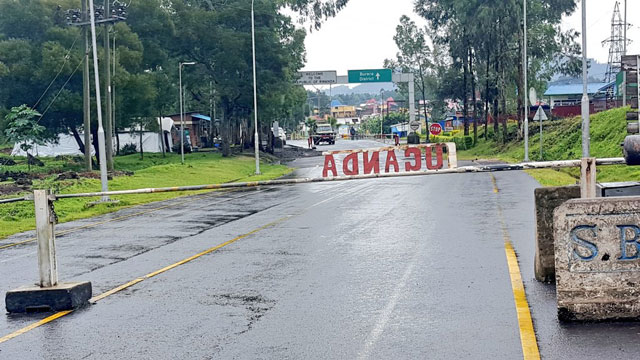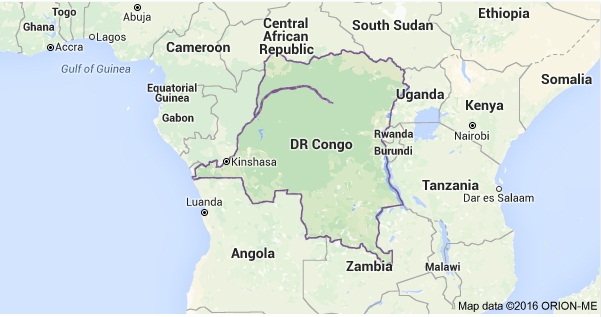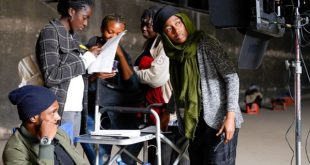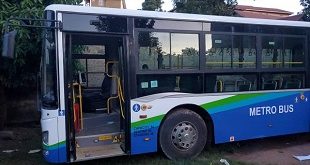
The current tension between Kigali and Kampala had been simmering for months until it peaked when Rwanda on Feb.27 stopped allowing travellers and vehicles from Uganda to cross the joint border at Katuna/Gatuna. The situation has since eased with vehicles and people being let through but Rwanda still does not allow trade or its passport holders to cross into Uganda.
Gideon Badagawa, the executive director of the Private Sector Foundation Uganda (PSFU), an umbrella organisation that brings together players in the private sector in the country said in June that Rwanda’s closure of its common border with Uganda at Katuna had reduced Uganda’s earnings from about Shs60 billion (Approx. US$16 million) to about US$2 million per month.
“We are losing business. Although politics is not losing, people are losing their jobs and this is going to be worse if the issue is not addressed,” Badagawa said.
Kagame, Museveni seek allies in Angola, Congo
Predicting when the impasse could ease is difficult because although Kagame and Museveni are continuing an old and known dispute between them and their behaviours are partly predictable, the other two leaders who have been sucked into the dispute this time, presidents João Lourenço of Angola and Félix Tshisekedi of the DR Congo are total unknowns.
The 65-year old Lourenço is an artillery general, former vice president, minister of defence and veteran of the People’s Movement for the Liberation of Angola (MPLA) from 1974, but he has operated in the shadows until he became president just 21 months ago.
Angola, according to Paula Cristina Roqué, a senior analyst of southern Africa for the International Crisis Group, could be engaging in multi-lateral engagements as a reflection of a concerted effort to become a leading continental power broker.
“Angola wants to assert its strength on the continent to project power internationally as it understands that only with alliances can it buffer itself from intrusive financial and political interventions,” said Roqué in a paper titled: “Angola’s Africa Policy.”
Meanwhile, the 56-year old Tshisekedi has just completed his seventh month as president of DR Congo and has no previous experience in government.
Lourenço and Tshisekedi are important to resolving the tension between Museveni and Kagame because, although they are being publicly presented as mediators, they are in fact major players. Tshisekedi is especially central to the tension between Museveni and Kagame because the anti-Kigali militia; the Democratic Liberation Forces of Rwanda (FDLR) and the Rwanda National Congress (RNC) operate from the DR Congo although Kigali says they are recruited in and have bases in Uganda.
“These two countries (Angola and DR Congo) are interested parties in what is happening between Rwanda and Uganda,” said Frederick Golooba-Mutebi, a regional researcher and analyst, in an interview with CNBC Africa in July.
He explained that Rwanda accuses Uganda of undermining its security by supporting insurgents that seek to topple the government in Kigali and these insurgents are based in DR Congo and Angola also has some insurgents within its border regions with DR Congo.
“The whole thing of insecurity within the Great Lakes region concerns Angola, DR Congo, Rwanda and Uganda in equal measure,” he said, adding that these insurgents cannot destabilize the region without causing insecurity in DR Congo where they are based.
“Suppose they attacked Rwanda and Rwandan forces pursued them back into the DR Congo, what you have is a war between two Rwandan protagonists being fought on the soil of DR Congo”.

Although Golooba spoke hypothetically, the situation he described has happened before and Uganda and Rwanda have entered DR Congo territory in hot pursuit of insurgents. On one occasion, the Rwanda-Uganda incursion led to regime change in Kinshasa. What could happen if Rwanda and Uganda went to war? Who would Angola, DR Congo, and Congo Brazzaville ally with? Pursuit of such alliances could possibly explain why Museveni and Kagame flew to Luanda.
An analysis of the Aug. 21 Luanda meeting press statement does not reveal much. But reading the 13 point communiqué issued after the First Quadripartite Meeting held on July 12 in Luanda shows that Tshisekedi is possibly the man to watch.
From the first Quadripartite Meeting chaired by President Lourenço, it is clear that the leaders view the diplomatic tension between Rwanda and Uganda as a result of regional issues emanating in the DR Congo.
Specific attention was made to the presence in the eastern DR Congo border area of militias, which are largely hostile to Rwanda, and DR Congo President Tshisekedi was urged to “pacify its entire territory.”
In point 3 of decisions reached, the leaders agreed to “prioritize the resolution of any dispute between their respective countries by peaceful means through conventional channels and in the spirit of African brotherhood and solidarity.”
Tshisekedi took a bold step when on Mar.25 he flew into Rwanda for the Africa CEO Summit and laid a wreath at the Kigali Genocide Memorial for the victims of the 1994 genocide. He visited Kampala and met with President Museveni the same day. Significantly, however, he had visited Museveni in October 2018 ahead of his January 2019 victory in the DR Congo presidential elections. He has also asked the UN to help DR Congo fight insurgents in its eastern provinces.
All indicators are that, on the issue of anti-Kigali militia in the DR Congo, Museveni wants a strategic long-term solution, while Kagame is aiming for short-term tactical interventions.
Diplomatic maneuvers are typically done without public explanation but Museveni’s Pan-African alliance building effort possibly explains new entrant Dennis Sassou Nguesso of Congo Brazzaville. It might also explain why from Angola, he flew straight to Tanzania to meet with President John Pombe Magufuli.
Earlier on June 03, President Nguesso sent a special message to Museveni through his minister of Foreign Affairs Jean Claude Gakusso who led pilgrims to the June 03 Martyrs Day Celebrations at Namugongo in Kampala.
President Museveni succeeded Nguesso as the Chairperson of the Regional Oversight Mechanism of the Peace, Security and Cooperation Framework for the DR Congo and the Region in October 2018. At the handover ceremony in the Commonwealth Resort Munyonyo in Kampala, Museveni said the problems in the DR Congo spill over not only to Uganda and other neighbouring countries and that the DR Congo government needed to act to establish regional peace.
“That trinity of the DR Congo, regional countries and the international community, can work if we embark on it seriously,” Museveni said.
At the time, Joseph Kabila was president and it appears that Museveni sees an opportunity of working with Tshisekedi to end the old Great Lakes problem of Rwandan militia in the DR Congo.
That may explain the overly optimistic title of a statement from President Museveni’s press on Aug.21 that screamed: “Cross border activities to resume as Uganda, Rwanda sign pact.”
It was in contrast to the tone by Kagame and Museveni in Luanda. Both presidents sounded optimistic but cool.
Kagame said he sees no problem in Rwanda working specifically with President Museveni to address the issues agreed and pledged to fully implement the terms of the agreement.
“We are not going to be found wanting in not only respecting the communiqué, but also our brothers who have brought us together to reach this understanding,” he told journalists, “We are going to address all the problems. By doing that indiscriminately, we will get where we want to be. The MOU addresses all the matters clearly and I don’t think we should be picking and choosing what we implement and what we don’t.”
He said implementation would be easy but implied it required time.
“I think it is not difficult to address many of the problems we have had, it may take a bit of time to understand each other, but I think we have come a long way,” he said.
Museveni meanwhile implied Luanda was neither a break through nor special. “I was already in touch with President Kagame through our channels,” he said, “but this came as reinforcement.
“We are just reaffirming what we have always held as principles of the African Union,” he said.
President Lourenço told Museveni and Kagame at the signing of the agreement that: “The signing alone cannot replace the problem; the solution resides in the political will of the leaders to take full commitment to respect what they have signed and we are certain they will do that.”
 The Independent Uganda: You get the Truth we Pay the Price
The Independent Uganda: You get the Truth we Pay the Price



Kagame alinga yalagira museveni ekyokukola naye olwokuba nti M7 tayagala kulaga amanyi nobusobozi. aleka mune nalekana ng’ali ku mpingu. kagame kilabika yekengera missions ze zeyayina ne kayihura. **M7 mune amuli bukika kubanga kirabika kayihura abanyarwanda abangi beyayingiza mu police kilabika kagame bayitiramu okutirimbura abantu nti bana uganda tukyawe M7 ne gov’t ya NRM. era ebya NRM byandiba nga ebya Goriyasi ne David. Kagame may make a record indirectly and asurprise to people power in ugandan amaso ku lutimbe.